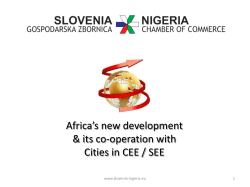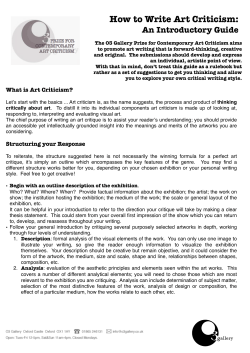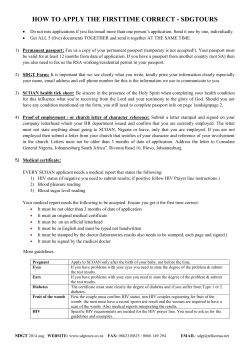
WHAT IS ARAISM? ara
WHAT IS ARAISM? Araism derives its connotation from a Yoruba root word, ara (wonder). It also enunciates an artistic application, which clearly spells out the acronym, A.R.A. translating to Aesthetically Rich Art. It is, therefore, the fusion of ara (wonder) and ARA that forms the philosophical base for Araism. Araism is an authentic African painting technique created and developed by Mufu Onifade. Its strength is firmly rooted in Yoruba culture. It is a product of constant studio experiments that lasted seven years (1989 – 1996). The journey began in 1989, when, having been grounded in the introductory assimilation of world art history, coupled with his understanding of Nigerian art, its proponent, Mufu Onifade, decided to create an authentic signature that would give his art a strong sense of direction and originality. This decision became imperative in view of the saturated art market in Lagos where he has been residing since 1973. After solving the initial teething problems, the first most successful experiment (at an advanced stage), titled Layewu Masquerade was executed in 1996; the second, Ascent to Knowledge, in 1997. While the former was an experiment on jute sack, the latter was a sequel on canvas. 1997, however, created the first public opening when Araism was featured at two different shows: Vision 2010 exhibition of Paintings, Sculptures and Photography packaged by Nkem Gallery on behalf of the Federal Government of Nigeria’s Vision 2010 Committee on Culture, staged at Abuja and the Best of Ife (a group of outstanding graduates from the University of Ife/Obafemi Awolowo University, Ile-Ife, Nigeria) exhibition titled Best of Ife ’07 held at the German Cultural Centre, Victoria Island, Lagos. In Lagos, four works were featured to feel the reactive impulse of the Nigerian Visual Art community. The experiment paid off as the 1997 outing also paved way for a solo exhibition at the same venue the following year. Titled Echoes of Silence, the platform was also used as an avenue to properly launch Araism with 32 paintings. The technique, through the works of Mufu Onifade, has since been presented at many national and international exhibitions including Austria, United Kingdom, Belgium, United States etc. BETWEEN TECHNIQUE AND STYLE: EVOLUTION OF ARAISM MOVEMENT One of the problems Araism had encountered was that of classification. Some scholars, art historians and arts writers had consistently referred to Araism as a style, in spite of the proponent’s referential insistence meant to project it as a technique. The issue of definition between technique and style may be seen as an academic or intellectual exercise, but in truth, while philosophies develop, it is better to develop its other elements along with it. Onifade’s answer to the question was practical and proactive. The result was the coming together of five disciples and the proponent of Araism in what led to the formation of Araism Movement. Niyi Omojuwa, Tope Oguntuase, Oludotun Popoola, Abiola Mautin Akande and Jonathan Ikpoza along with Mufu Onifade presented their works to the public at the launching/maiden exhibition of the Movement at Harmattan Workshop Gallery, Victoria Island, Lagos on July 15, 2006. The second outing, titled Araism Movement 2, joined by new entrants, Abolore Awojobi and Amodu Oluwanbe (with the exclusion of 2006 debutant, Tope Oguntuase) occurred at the National Museum, Onikan, Lagos on July 14, 2007. The show was supported by the National Commission for Museums and Monuments. That year’s exhibiting artists included Niyi Omojuwa, Oludotun Popoola, Abiola Mautin Akande, Jonathan Ikpoza, Abolore Awojobi, Amodu Oluwanbe and, of course, Mufu Onifade. With these two major exhibitions, it became much easier to spell out the difference between a style and a technique. While all exhibiting artists used the technique of Araism to project their creative ideas, the approach came in different forms, and this defines the various styles within a technique. One glaring evidence is that the strokes of one artist are different from the other, but there is no difference in technical application. Kehinde Adepegba, an art essayist observes: “The distinctiveness of Araism is in the sameness of the process of sizing the painting canvas/ground, application of colour with palette knife and rendering of themes in harmonious particles and molecules of patterns and colour textures. What you have at the end of these processes is a technique that separates Mufu’s works from the works of other contemporary Nigerian artists. This homogenous character is found in all the works of the numerous exponents of Araism, all of whom are Mufu’s disciples. Yet, one can comprehend each disciple’s creativity and deftness from his/her style or/and sub-style. What this foretells for Araism is spatial spread, variety of renditions and further acceptance”. Araism Movement has been enshrined in the Nigeria’s cultural calendar as an annual exhibition that the Visual Art Community looks forward to. While the 10th anniversary of Araism was celebrated in 2008, Araism Movement has graced the public space with the following exhibitions: Araism Movement, Harmattan Workshop Gallery, Lagos (2006). Araism Movement 2, National Museum, Onikan, Lagos (2007). Araism Movement 3, LABAF, National Theatre, Iganmu, Lagos (2008). Araism Movement 4, Naijazz, Victoria Island, Lagos (2008). Araism Movement 5, Mydrim Gallery, Ikoyi, Lagos (2009). CELEBRATING GANI ADAMS WITH ARAISM MOVEMENT 6 This is the 6th in the series of Araism Movement’s artistic ritual and it was deliberately designed to celebrate the many accomplishments of a young, but energetic and highly resourceful icon of Yoruba culture, Otunba Gani Adams at 40. Araism developed its philosophies on the wings of Yoruba culture and cosmology; whereas Gani Adams’ contribution to the liberation and promotion of Yoruba people and their sacred culture cannot be over-emphasized. Therefore, it is with great pleasure that Araism Movement has decided to use its creative input to celebrate an individual of ideas and accomplishment. This is the first time in the history of both the technique of Araism since 1998 and Araism Movement since 2006, that our art is used to celebrate an individual, and we are proud to do so. On this show are 10 members of the Movement namely Mufu Onifade, Abiola Mautin Akande (Oldskool), Dotun Popoola, Abolore Awojobi, Oluwanbe Amodu, Esther Ayodeji Emmanuel, Bolarinwa Olowolabayaki, George Egunjobi and latest debutants: Abimbola Oladipupo Akolade and Jonathan Imafidon. All of us, members of the Movement, including others who were unable to take part in this show, hereby wish Otunba Gani Adams a happy birthday and many happy returns. Igba odun, odun kan ni o. Mufu Onifade Founder, Araism/Araism Movement
© Copyright 2025





















